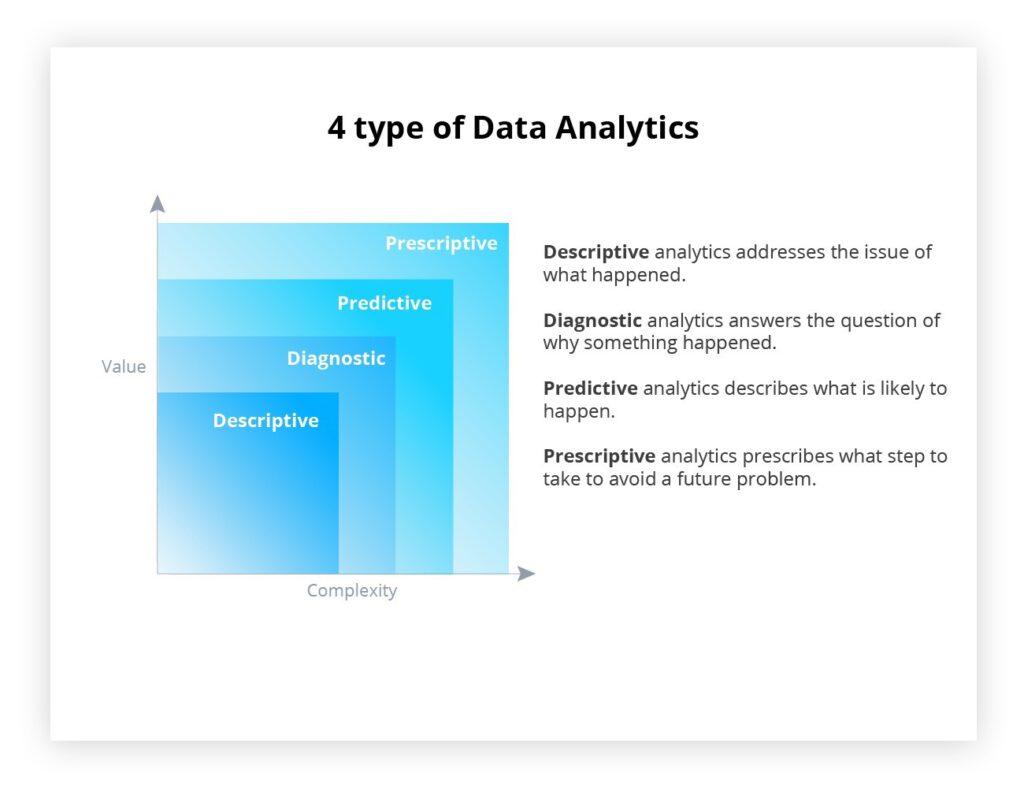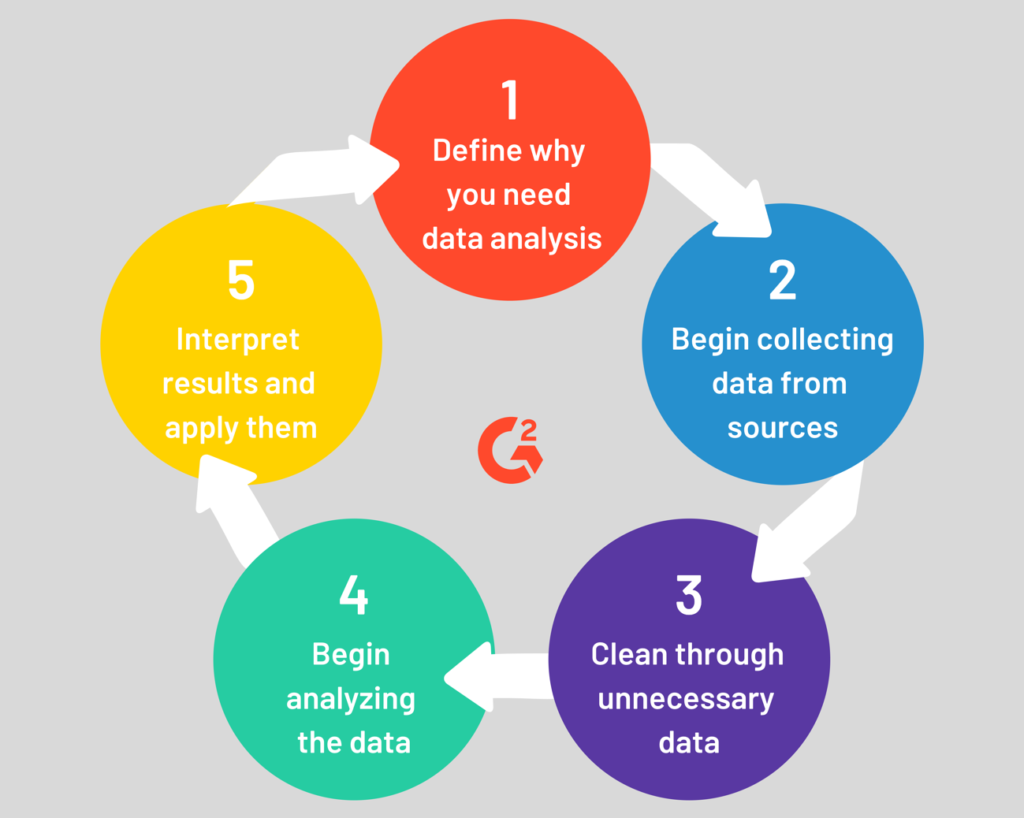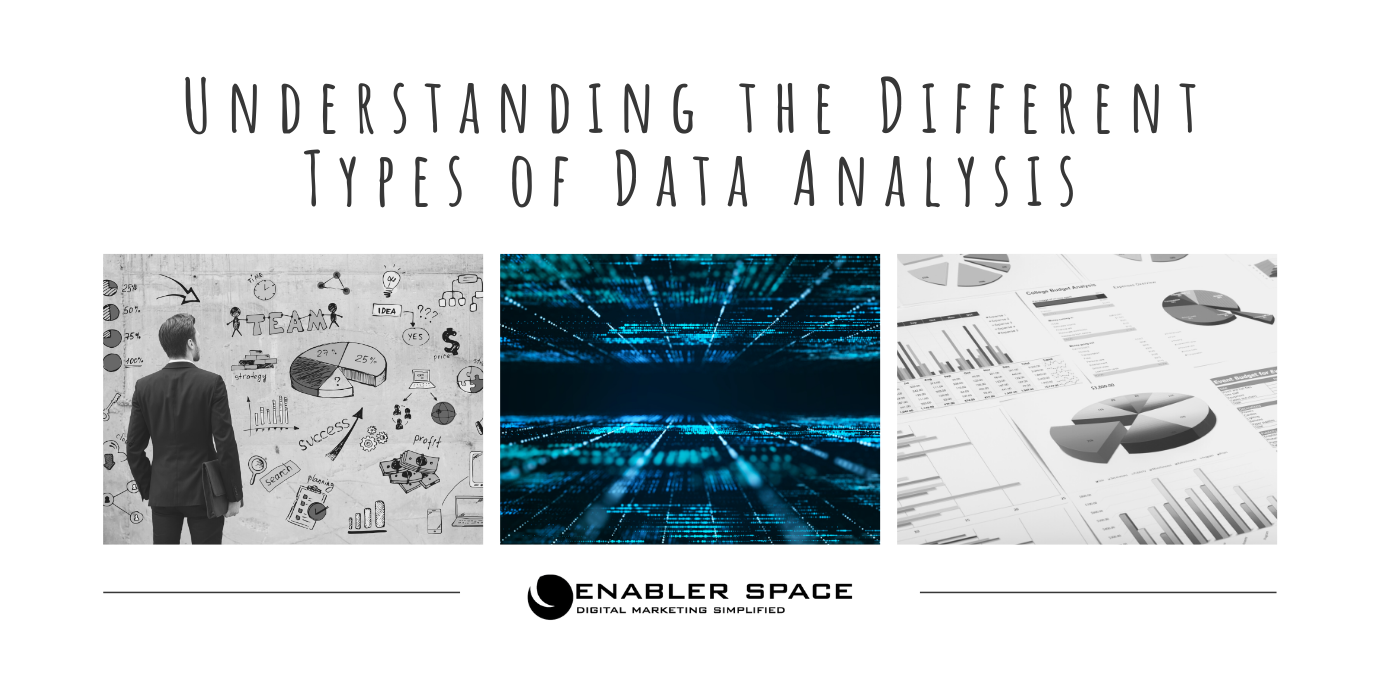Whether you pronounce it data or data, you’re probably trying to make use of it. In short, data helps you understand what’s going on and what you can do about it.
Data analysis is a crucial part of data-driven marketing. Data this data that, what’s with all the data? Data-driven marketing is when businesses optimize communication with their consumers based on customer information. It enables marketers to predict the needs, desires, and even future behaviors of their customers. This in turn helps them to develop tailored marketing strategies to achieve the highest ROI possible.
Data analysis makes this possible by allowing businesses to:
- Gain a deeper understanding of their target market
- Identify customer needs and even anticipate them
- Design strategies that provide customers with the goods that answer those needs

The Main Types of Data Analysis
Descriptive Analytics
Basically, describing things. Descriptive analytics looks at what has already happened. It looks at the data of past events and analyzes it to give us some insight as to how to increase our efficiency. An example of this is Google Analytics looking at multiple pools of data and indicating what was right and what was wrong.
Diagnostic Analytics
Just like a doctor, diagnostic analytics diagnoses what’s wrong. The past data that you got isn’t just looked at to see what happened and what worked or didn’t. Instead, you ask why something happened, come up with an answer, and then compare the data to that answer. It helps companies understand the cause of something that occurred. An example is analyzing social media campaigns to see if they were productive or not based on the number of posts, comments, likes, shares, followers, and etc.
Predictive Analytics
Umm… the name gives it away doesn’t it. It describes what’s likely to occur. Using the findings from descriptive and diagnostic analytics, predictive analytics searches through them for tendencies and patterns in order to help predict future trends. It’s ability to forecast an approximation of what is likely to happen is all thanks to applications of statistical models. Translation, a whole lot of maths. Using predictive analytics effectively can help with leveraging sales and boosting marketing by using data on lead generation, interactions, types of messaging, and social media.
Prescriptive Analytics
Is it like prescribing medicine? Kind of. It tells you what the proper course of action is in order to avoid a problem or achieve the highest potential. This type of data analysis is more complex. It uses tools and innovations like machine learning, business tenets, as well as a whole bunch of calculations and statistical algorithms. Using all it’s tools, techniques, and technologies prescriptive analytics can help a business chart a course to it’s most desired destination.

So, Which Approach Should I Use?
There are more than the above mentioned types of data analysis out there and only you know which one(s) you need. Do you prefer a reactive approach? Then using just the descriptive and diagnostics ones are enough. If you’re aiming to be more proactive, then you’ll want to top those two off with the predictive and prescriptive ones to help you optimize. Then maybe you need different approaches like time series analysis, exploratory data analysis, or inferential analysis. The tools, technology, techniques, and other elements you might need are available and out there, ready to be used. Data is important in the digital age. Using the right method to understand and make use of it is crucial to the development of your business.

